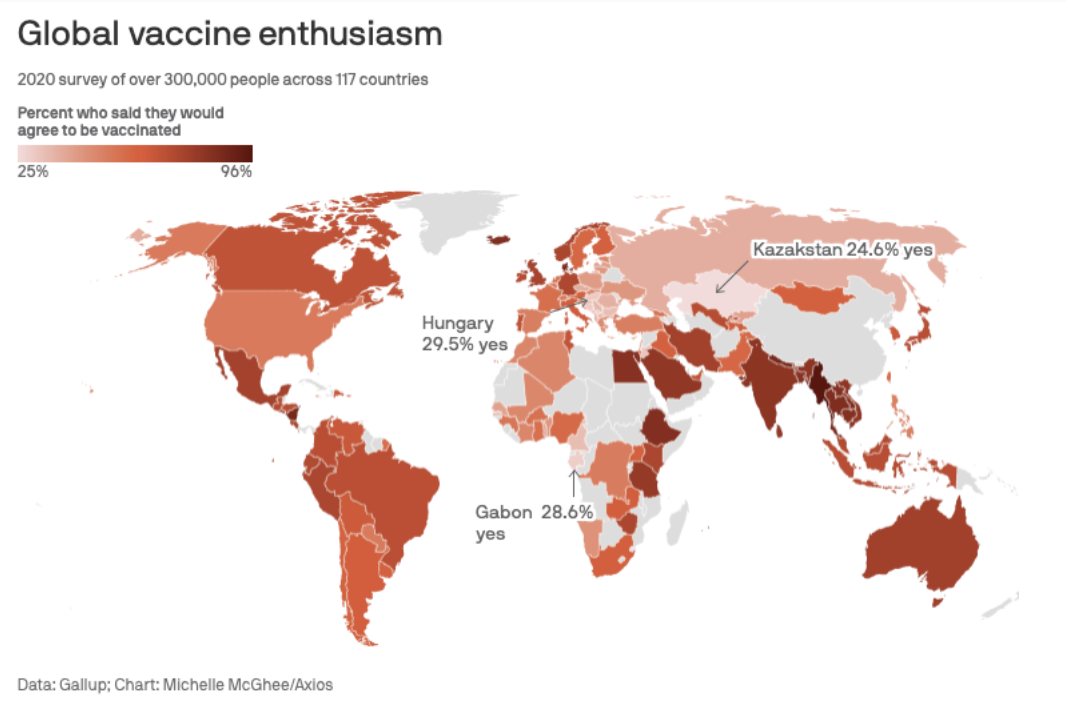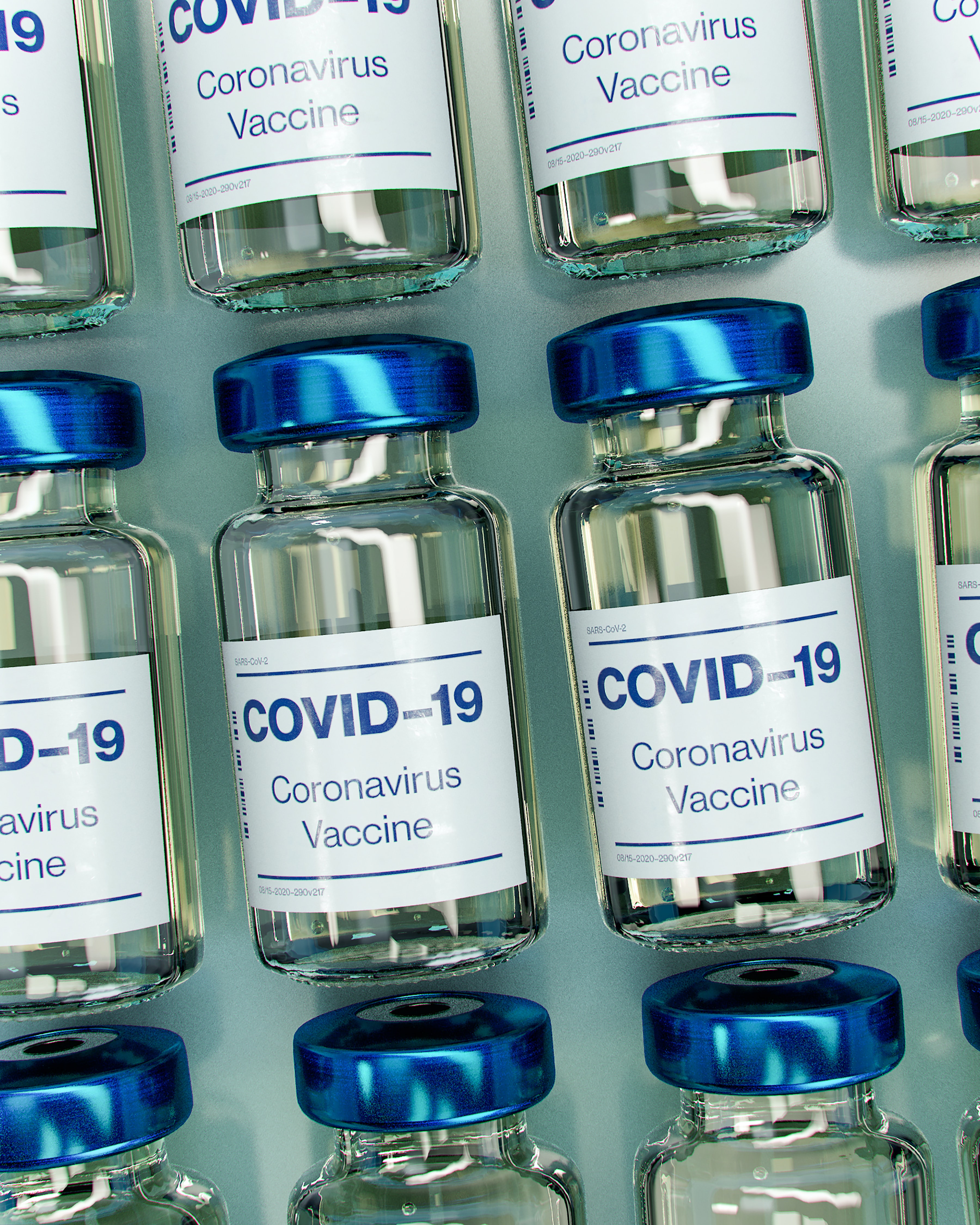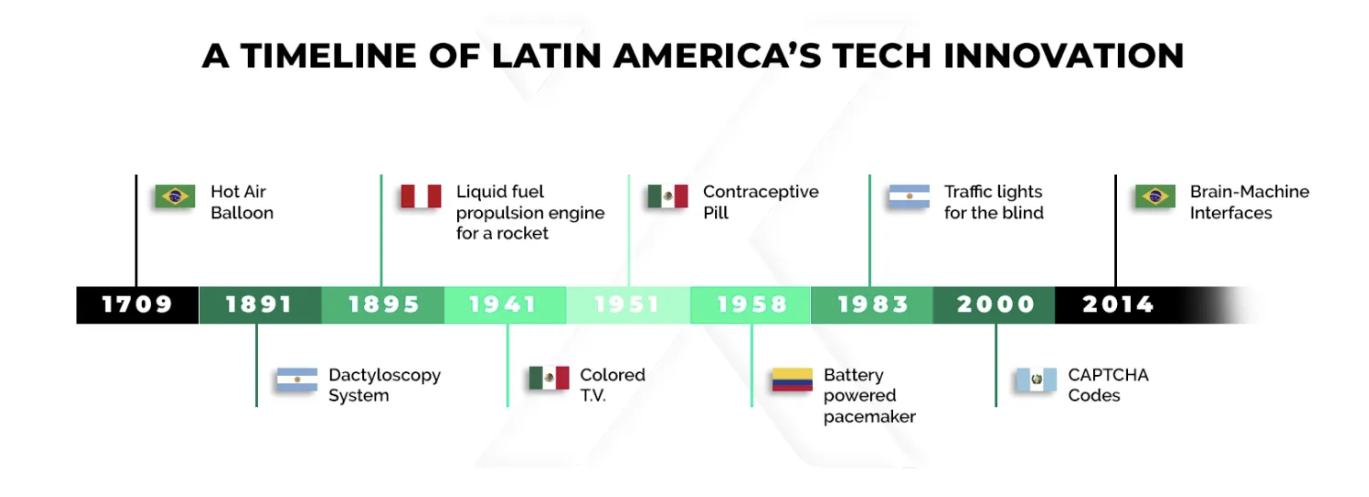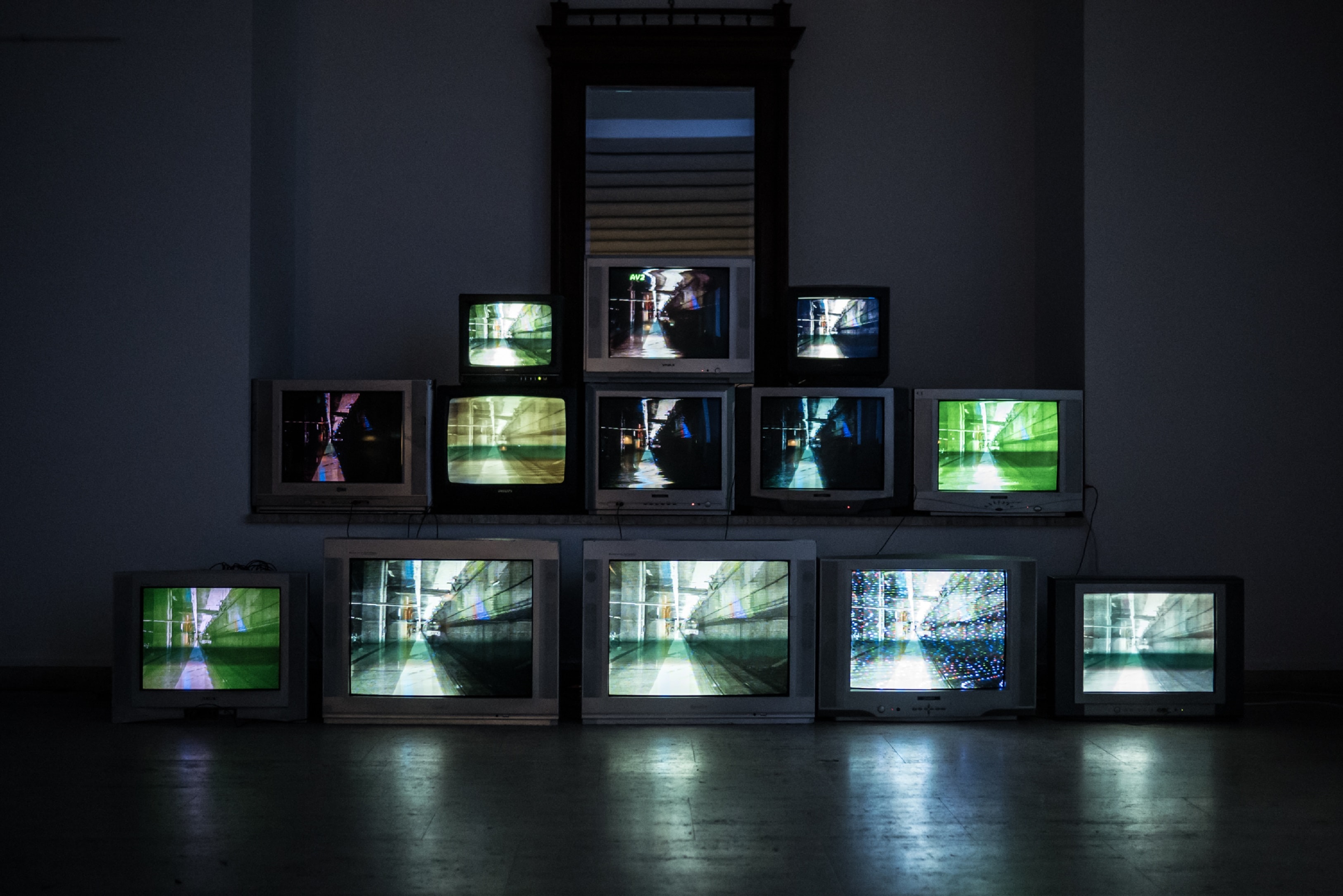
4.3 How Science and Technology Affect Contemporary Life
5 min read•january 27, 2023
Isabela Padilha Vilela
Isabela Padilha Vilela
Contemporary Life
Contemporary life is shaped by our lifestyles, our history and the social values that we cherish. In this topics, we will explore the innovations that mark our daily life and understand how science and technology shaped the daily life of people in spanish speaking countries. 🇪🇸
Social Values / Volunteer work
In Latin America, there is a predominance of and appreciations for one's community and place in society. For this reason, helping others, whether it is your vecinos or the barrio as a whole is a noble and appreciated action.
The areas/issues that are mainly addressed through volunteer work in the region, include:
- Usually aims to help families and individuals gain access to resources that will help them ascend socially and economically.
- Consists in increasing access to educational opportunities that aim to reduce inequality.
- Includes increasing access to services and improving the overall wellbeing of people.
Needless to say that is extremely important for Latin Americans. Creating stronger connections with their communities can improve one's quality of life and reinforce communal values.
Technology can more easily help to close these gaps and help with the improvement of the quality of life of Latin Americans. In the next section you will read about the challenges posed by the pandemic and the role of access and technology to mitigate its impact.
Vaccine Development
The year 2020 will undoubtedly go down in the history books. Experiencing a global pandemic, switching to remote working and learning, and choosing between public trust or apprehension towards the CDC and WHO were all new concepts to nearly every generation in every country. Yet after only about one year of a pandemic, those experiences became normalized. In the meantime, scientists around the world were working around the clock to create multiple vaccines to combat the deadly spread of COVID-19.
Creating a vaccine in under 12 months is quite an accomplishment. In comparison, the mumps vaccine took 4 years to develop. So while the pandemic made new habits, such as mask-wearing and enforcing social distancing in public situations, it also created a global alliance for vaccine research and distribution.
However, the vaccine’s effectiveness means nothing if the majority of people choose not to receive it. On one hand, it’s amazing that the vaccine was developed in under a year so “normal life” can resume, yet on the other hand, many fear the vaccine was rushed or have other hesitations regarding its use, thereby making its availability meaningless.

Image and data from Michelle McGhee/Axios
Below is data from what COVID-19 vaccine hesitancy looks like in Spanish-speaking countries, as of May 3, 2021. As a comparison, in the United States, 52.9% of Americans would agree to be vaccinated.
Mexico: 75% would agree to be vaccinated
Guatemala: 71.3%
Costa Rica: 74%
Honduras: 70.3%
Salvador: 75%
Nicaragua: 86.8%
Dominican Republic: 64.8%
Venezuela: 66.1%
Colombia: 69.8%
Ecuador: 72.1%
Peru: 73.3%
Bolivia: 64.9%
Chile: 60.4%
Argentina: 63.1%
Paraguay: 52.7%
Uruguay: 61.2%
Spain: 51.3%

Latin American Inventions
While you may not think of South America as a powerhouse continent for technological or scientific advances, it most certainly can be considered one. Latin America has given birth to some of the greatest inventors and innovators of all time. Moreover, Latin America has had a hand in some of the massive changes in the tech industry, such as liquid-fueled rocket engines and color television, innovations that shook the world when they were first introduced. Historically, Latin America has always been on the map.

Let’s zoom in on a few of the innovations below, but before we do, remember, Brazil is NOT a Spanish speaking country, so you should NEVER refer to it during the AP test (for example, during your comparación cultural).
(Argentina)
1981
Created by Juan Cucetich
Created special system for identifying people’s fingerprints
Concept still used today for criminal investigations
(Peru)
1895
One of the first scientists to draw up the concept of using liquid fuel for rockets, yet his ideas were not taken seriously at the time
Still considered many as a founding father of astronautics
(Mexico)
1941
Patented the first system that transformed television signals into color
1951
Developed synthetic progesterone, the only Mexican scientist currently in the U.S. Inventors Hall of Fame
(Argentina)
1983
Created a device that used sounds to indicate when it was safe to cross the street
(Guatemala)
2000
CAPTCHA stands for “Completely Automated Public Turing test to tell Computers and Humans Apart,” AKA the code you have to type often on websites to prove you’re not a robot!
- injection
- surgery
- antibiotic
- first aid
- prescription
- diagnosis
- treatment
- outbreak
- quarantine
- disinfectant
- mask
- pandemic
Organización Mundial de la Salud (OMS) - Spanish name for World Organization (WHO)
- remote working
- virus
- breakthrough
- fingerprint
-
-
Marcapasos alimentado por batería - battery powered pacemaker
-
- codes
Burbuja artificial neonatal - neonatal Artificial Bubble
- life expectancy
- recovery time
- Genetic engineering


Strive for Five Vocab 🔑
Covid Related Vocabulary
Science & Technology Related Vocabulary
Key Terms to Review (41)
Brote
: Un brote se refiere a la aparición repentina y generalizada de casos de una enfermedad en una población determinada durante un período corto de tiempo. Suele ser causado por la propagación rápida del agente infeccioso entre las personas.CAPTCHA Codes
: CAPTCHA codes are security measures used on websites to verify that users are human rather than automated bots. They typically involve solving puzzles or identifying distorted characters.Códigos
: Sets of rules or instructions used to represent information in various formats, such as computer programming languages, barcodes, or secret messages.Collectivist Values
: Collectivist values refer to the belief system that emphasizes the importance of community and group goals over individual needs and desires. It promotes cooperation, collaboration, and shared responsibility within a society.Colored TV
: Colored TV refers to television technology that displays images in full color, as opposed to black-and-white television. It allows viewers to see programs with vibrant hues and lifelike visuals.Community-building
: Community-building refers to the process of creating and strengthening connections within a group of people, fostering a sense of belonging and shared identity.Contraceptive Pill
: The contraceptive pill is a medication taken orally by women to prevent pregnancy. It contains hormones that inhibit ovulation and thicken cervical mucus, making it difficult for sperm to reach the egg.Cuarentena
: La cuarentena es un período de aislamiento o restricción impuesto para prevenir la propagación de una enfermedad contagiosa. Durante este tiempo, las personas deben permanecer en sus hogares u otro lugar designado y evitar el contacto con otras personas.Dactyloscopy System
: A dactyloscopy system is a method of identifying individuals based on their unique fingerprint patterns. It is commonly used in forensic science and law enforcement to match fingerprints found at crime scenes to known individuals.Desinfectante
: A desinfectante is a substance or product that kills or eliminates germs, bacteria, and viruses from surfaces to prevent the spread of diseases.Economic Empowerment
: Economic empowerment refers to the ability of individuals or communities to have control over their financial resources and make decisions that positively impact their economic well-being.Education
: Education refers to the process of acquiring knowledge, skills, values, and attitudes through formal or informal means such as schooling, self-study, or life experiences.El antibiótico
: Un antibiótico is a type of medication that fights bacterial infections by killing bacteria or inhibiting their growth. They are commonly prescribed by doctors for various infections.El avance
: El avance se refiere al progreso o mejora en una determinada área o campo de estudio.El diagnóstico
: Proceso mediante el cual se identifica una enfermedad o condición médica a través de la evaluación de los síntomas, signos clínicos, pruebas médicas y antecedentes del paciente.El tratamiento
: El tratamiento se refiere a las acciones y procedimientos médicos utilizados para curar o aliviar una enfermedad o condición. Es el conjunto de medidas terapéuticas que se aplican con el objetivo de mejorar la salud del paciente.El virus
: A virus is a microscopic infectious agent that replicates inside living cells of organisms. It can cause a wide range of diseases in humans, animals, and plants.Guillermo González Camarena
: Guillermo González Camarena was a Mexican engineer who invented an early color television system known as "Chromoscopic Adapter for Television." His invention allowed for the transmission and reception of color broadcasts.Health
: Health refers to a state of complete physical, mental, and social well-being where an individual is free from illness or injury.Juan Vucetich
: Juan Vucetich was an Argentine police official who pioneered the use of fingerprinting as a method of criminal identification. He developed the first systematic method for classifying and matching fingerprints, which revolutionized forensic science.La cirugía
: La cirugía refers to a surgical procedure performed by doctors or surgeons to treat or correct medical conditions. It involves making incisions on the body and manipulating tissues or organs.La esperanza de vida
: The average number of years a person is expected to live, based on factors such as health, lifestyle, and medical advancements.La huella digital/dactilar
: La huella digital/dactilar es la impresión única y distintiva que deja una persona cuando toca una superficie con sus dedos.La ingeniería genética
: The manipulation of an organism's genes using biotechnology techniques to alter its characteristics or create new ones.La inyección
: A la inyección is a medical procedure where a liquid medication is injected into the body using a needle and syringe. It allows for quick delivery of medication directly into the bloodstream.La píldora
: A small, oral medication that is designed to be swallowed and contains a specific dose of one or more active ingredients.La receta
: Prescripción escrita por un médico que indica los medicamentos, dosis y pautas específicas para el tratamiento de una enfermedad o condición médica.Liquid Fuel Propulsion
: Liquid fuel propulsion refers to the use of liquid fuels, such as liquid hydrogen or kerosene, to generate thrust in rockets or jet engines. This type of propulsion allows for greater control over thrust levels and can be used for both space exploration and aviation.Los primeros auxilios
: Las medidas iniciales y básicas que se toman para brindar ayuda a una persona que ha sufrido un accidente o enfermedad repentina.Luis Miramontes
: Luis Miramontes was a Mexican chemist who co-invented the first oral contraceptive pill in 1951. His contribution revolutionized birth control methods and had a significant impact on women's reproductive rights worldwide.Luis Von Ahn
: Luis Von Ahn is a computer scientist and entrepreneur who co-invented CAPTCHA codes. He also founded Duolingo, a popular language-learning platform that offers courses in multiple languages, including Spanish.Mario Dávila
: Mario Dávila is a renowned Spanish language teacher and content creator who provides valuable resources and tips for AP Spanish Language students. He is known for his concise explanations and relatable analogies that help students understand complex concepts.Mascarilla
: A mascarilla is a protective covering worn over the nose and mouth to prevent the transmission of airborne particles, such as droplets containing viruses or bacteria.Organización Mundial de la Salud (OMS)
: The Organización Mundial de la Salud (OMS), or World Health Organization (WHO) in English, is a specialized agency of the United Nations that is responsible for international public health. It provides leadership on global health matters, sets norms and standards, and coordinates efforts to prevent and control diseases.Pandemia
: A pandemia is an outbreak of an infectious disease that spreads across multiple countries or continents, affecting a large number of people.Pedro Paulet
: Pedro Paulet was a Peruvian engineer and inventor who is considered one of the pioneers of modern rocketry. He made significant contributions to the development of liquid-fueled rockets.Propulsión de combustible líquido
: La propulsión de combustible líquido es el proceso mediante el cual se utiliza un líquido inflamable, como la gasolina, para generar energía y mover un vehículo o una máquina.Semáforos para ciegos
: Specialized traffic lights equipped with audible signals or tactile features to assist visually impaired individuals in crossing the street safely.Teletrabajo
: Teletrabajo, or telecommuting in English, refers to working remotely from home or another location using technology such as computers and telecommunications. It allows individuals to perform their job duties without being physically present at their workplace.Tiempo de recuperación
: The period it takes for someone to fully recover from an illness, injury, or medical procedure.Traffic Lights for the Blind
: Traffic lights for the blind are devices that provide auditory or tactile signals to help visually impaired individuals navigate intersections safely. They emit sounds or vibrations indicating when it is safe to cross the street.4.3 How Science and Technology Affect Contemporary Life
5 min read•january 27, 2023
Isabela Padilha Vilela
Isabela Padilha Vilela
Contemporary Life
Contemporary life is shaped by our lifestyles, our history and the social values that we cherish. In this topics, we will explore the innovations that mark our daily life and understand how science and technology shaped the daily life of people in spanish speaking countries. 🇪🇸
Social Values / Volunteer work
In Latin America, there is a predominance of and appreciations for one's community and place in society. For this reason, helping others, whether it is your vecinos or the barrio as a whole is a noble and appreciated action.
The areas/issues that are mainly addressed through volunteer work in the region, include:
- Usually aims to help families and individuals gain access to resources that will help them ascend socially and economically.
- Consists in increasing access to educational opportunities that aim to reduce inequality.
- Includes increasing access to services and improving the overall wellbeing of people.
Needless to say that is extremely important for Latin Americans. Creating stronger connections with their communities can improve one's quality of life and reinforce communal values.
Technology can more easily help to close these gaps and help with the improvement of the quality of life of Latin Americans. In the next section you will read about the challenges posed by the pandemic and the role of access and technology to mitigate its impact.
Vaccine Development
The year 2020 will undoubtedly go down in the history books. Experiencing a global pandemic, switching to remote working and learning, and choosing between public trust or apprehension towards the CDC and WHO were all new concepts to nearly every generation in every country. Yet after only about one year of a pandemic, those experiences became normalized. In the meantime, scientists around the world were working around the clock to create multiple vaccines to combat the deadly spread of COVID-19.
Creating a vaccine in under 12 months is quite an accomplishment. In comparison, the mumps vaccine took 4 years to develop. So while the pandemic made new habits, such as mask-wearing and enforcing social distancing in public situations, it also created a global alliance for vaccine research and distribution.
However, the vaccine’s effectiveness means nothing if the majority of people choose not to receive it. On one hand, it’s amazing that the vaccine was developed in under a year so “normal life” can resume, yet on the other hand, many fear the vaccine was rushed or have other hesitations regarding its use, thereby making its availability meaningless.

Image and data from Michelle McGhee/Axios
Below is data from what COVID-19 vaccine hesitancy looks like in Spanish-speaking countries, as of May 3, 2021. As a comparison, in the United States, 52.9% of Americans would agree to be vaccinated.
Mexico: 75% would agree to be vaccinated
Guatemala: 71.3%
Costa Rica: 74%
Honduras: 70.3%
Salvador: 75%
Nicaragua: 86.8%
Dominican Republic: 64.8%
Venezuela: 66.1%
Colombia: 69.8%
Ecuador: 72.1%
Peru: 73.3%
Bolivia: 64.9%
Chile: 60.4%
Argentina: 63.1%
Paraguay: 52.7%
Uruguay: 61.2%
Spain: 51.3%

Latin American Inventions
While you may not think of South America as a powerhouse continent for technological or scientific advances, it most certainly can be considered one. Latin America has given birth to some of the greatest inventors and innovators of all time. Moreover, Latin America has had a hand in some of the massive changes in the tech industry, such as liquid-fueled rocket engines and color television, innovations that shook the world when they were first introduced. Historically, Latin America has always been on the map.

Let’s zoom in on a few of the innovations below, but before we do, remember, Brazil is NOT a Spanish speaking country, so you should NEVER refer to it during the AP test (for example, during your comparación cultural).
(Argentina)
1981
Created by Juan Cucetich
Created special system for identifying people’s fingerprints
Concept still used today for criminal investigations
(Peru)
1895
One of the first scientists to draw up the concept of using liquid fuel for rockets, yet his ideas were not taken seriously at the time
Still considered many as a founding father of astronautics
(Mexico)
1941
Patented the first system that transformed television signals into color
1951
Developed synthetic progesterone, the only Mexican scientist currently in the U.S. Inventors Hall of Fame
(Argentina)
1983
Created a device that used sounds to indicate when it was safe to cross the street
(Guatemala)
2000
CAPTCHA stands for “Completely Automated Public Turing test to tell Computers and Humans Apart,” AKA the code you have to type often on websites to prove you’re not a robot!
- injection
- surgery
- antibiotic
- first aid
- prescription
- diagnosis
- treatment
- outbreak
- quarantine
- disinfectant
- mask
- pandemic
Organización Mundial de la Salud (OMS) - Spanish name for World Organization (WHO)
- remote working
- virus
- breakthrough
- fingerprint
-
-
Marcapasos alimentado por batería - battery powered pacemaker
-
- codes
Burbuja artificial neonatal - neonatal Artificial Bubble
- life expectancy
- recovery time
- Genetic engineering


Strive for Five Vocab 🔑
Covid Related Vocabulary
Science & Technology Related Vocabulary
Key Terms to Review (41)
Brote
: Un brote se refiere a la aparición repentina y generalizada de casos de una enfermedad en una población determinada durante un período corto de tiempo. Suele ser causado por la propagación rápida del agente infeccioso entre las personas.CAPTCHA Codes
: CAPTCHA codes are security measures used on websites to verify that users are human rather than automated bots. They typically involve solving puzzles or identifying distorted characters.Códigos
: Sets of rules or instructions used to represent information in various formats, such as computer programming languages, barcodes, or secret messages.Collectivist Values
: Collectivist values refer to the belief system that emphasizes the importance of community and group goals over individual needs and desires. It promotes cooperation, collaboration, and shared responsibility within a society.Colored TV
: Colored TV refers to television technology that displays images in full color, as opposed to black-and-white television. It allows viewers to see programs with vibrant hues and lifelike visuals.Community-building
: Community-building refers to the process of creating and strengthening connections within a group of people, fostering a sense of belonging and shared identity.Contraceptive Pill
: The contraceptive pill is a medication taken orally by women to prevent pregnancy. It contains hormones that inhibit ovulation and thicken cervical mucus, making it difficult for sperm to reach the egg.Cuarentena
: La cuarentena es un período de aislamiento o restricción impuesto para prevenir la propagación de una enfermedad contagiosa. Durante este tiempo, las personas deben permanecer en sus hogares u otro lugar designado y evitar el contacto con otras personas.Dactyloscopy System
: A dactyloscopy system is a method of identifying individuals based on their unique fingerprint patterns. It is commonly used in forensic science and law enforcement to match fingerprints found at crime scenes to known individuals.Desinfectante
: A desinfectante is a substance or product that kills or eliminates germs, bacteria, and viruses from surfaces to prevent the spread of diseases.Economic Empowerment
: Economic empowerment refers to the ability of individuals or communities to have control over their financial resources and make decisions that positively impact their economic well-being.Education
: Education refers to the process of acquiring knowledge, skills, values, and attitudes through formal or informal means such as schooling, self-study, or life experiences.El antibiótico
: Un antibiótico is a type of medication that fights bacterial infections by killing bacteria or inhibiting their growth. They are commonly prescribed by doctors for various infections.El avance
: El avance se refiere al progreso o mejora en una determinada área o campo de estudio.El diagnóstico
: Proceso mediante el cual se identifica una enfermedad o condición médica a través de la evaluación de los síntomas, signos clínicos, pruebas médicas y antecedentes del paciente.El tratamiento
: El tratamiento se refiere a las acciones y procedimientos médicos utilizados para curar o aliviar una enfermedad o condición. Es el conjunto de medidas terapéuticas que se aplican con el objetivo de mejorar la salud del paciente.El virus
: A virus is a microscopic infectious agent that replicates inside living cells of organisms. It can cause a wide range of diseases in humans, animals, and plants.Guillermo González Camarena
: Guillermo González Camarena was a Mexican engineer who invented an early color television system known as "Chromoscopic Adapter for Television." His invention allowed for the transmission and reception of color broadcasts.Health
: Health refers to a state of complete physical, mental, and social well-being where an individual is free from illness or injury.Juan Vucetich
: Juan Vucetich was an Argentine police official who pioneered the use of fingerprinting as a method of criminal identification. He developed the first systematic method for classifying and matching fingerprints, which revolutionized forensic science.La cirugía
: La cirugía refers to a surgical procedure performed by doctors or surgeons to treat or correct medical conditions. It involves making incisions on the body and manipulating tissues or organs.La esperanza de vida
: The average number of years a person is expected to live, based on factors such as health, lifestyle, and medical advancements.La huella digital/dactilar
: La huella digital/dactilar es la impresión única y distintiva que deja una persona cuando toca una superficie con sus dedos.La ingeniería genética
: The manipulation of an organism's genes using biotechnology techniques to alter its characteristics or create new ones.La inyección
: A la inyección is a medical procedure where a liquid medication is injected into the body using a needle and syringe. It allows for quick delivery of medication directly into the bloodstream.La píldora
: A small, oral medication that is designed to be swallowed and contains a specific dose of one or more active ingredients.La receta
: Prescripción escrita por un médico que indica los medicamentos, dosis y pautas específicas para el tratamiento de una enfermedad o condición médica.Liquid Fuel Propulsion
: Liquid fuel propulsion refers to the use of liquid fuels, such as liquid hydrogen or kerosene, to generate thrust in rockets or jet engines. This type of propulsion allows for greater control over thrust levels and can be used for both space exploration and aviation.Los primeros auxilios
: Las medidas iniciales y básicas que se toman para brindar ayuda a una persona que ha sufrido un accidente o enfermedad repentina.Luis Miramontes
: Luis Miramontes was a Mexican chemist who co-invented the first oral contraceptive pill in 1951. His contribution revolutionized birth control methods and had a significant impact on women's reproductive rights worldwide.Luis Von Ahn
: Luis Von Ahn is a computer scientist and entrepreneur who co-invented CAPTCHA codes. He also founded Duolingo, a popular language-learning platform that offers courses in multiple languages, including Spanish.Mario Dávila
: Mario Dávila is a renowned Spanish language teacher and content creator who provides valuable resources and tips for AP Spanish Language students. He is known for his concise explanations and relatable analogies that help students understand complex concepts.Mascarilla
: A mascarilla is a protective covering worn over the nose and mouth to prevent the transmission of airborne particles, such as droplets containing viruses or bacteria.Organización Mundial de la Salud (OMS)
: The Organización Mundial de la Salud (OMS), or World Health Organization (WHO) in English, is a specialized agency of the United Nations that is responsible for international public health. It provides leadership on global health matters, sets norms and standards, and coordinates efforts to prevent and control diseases.Pandemia
: A pandemia is an outbreak of an infectious disease that spreads across multiple countries or continents, affecting a large number of people.Pedro Paulet
: Pedro Paulet was a Peruvian engineer and inventor who is considered one of the pioneers of modern rocketry. He made significant contributions to the development of liquid-fueled rockets.Propulsión de combustible líquido
: La propulsión de combustible líquido es el proceso mediante el cual se utiliza un líquido inflamable, como la gasolina, para generar energía y mover un vehículo o una máquina.Semáforos para ciegos
: Specialized traffic lights equipped with audible signals or tactile features to assist visually impaired individuals in crossing the street safely.Teletrabajo
: Teletrabajo, or telecommuting in English, refers to working remotely from home or another location using technology such as computers and telecommunications. It allows individuals to perform their job duties without being physically present at their workplace.Tiempo de recuperación
: The period it takes for someone to fully recover from an illness, injury, or medical procedure.Traffic Lights for the Blind
: Traffic lights for the blind are devices that provide auditory or tactile signals to help visually impaired individuals navigate intersections safely. They emit sounds or vibrations indicating when it is safe to cross the street.
Resources
© 2024 Fiveable Inc. All rights reserved.
AP® and SAT® are trademarks registered by the College Board, which is not affiliated with, and does not endorse this website.